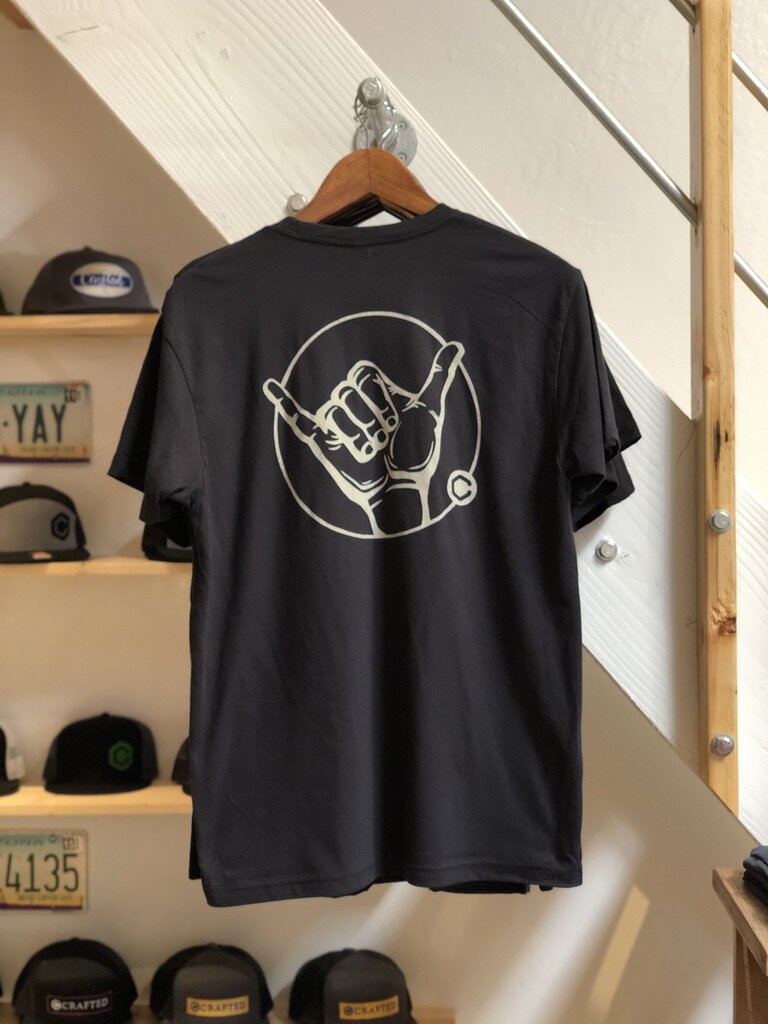 Image 1 of 2
Image 1 of 2

 Image 2 of 2
Image 2 of 2



The "SHAKA" (SOLD OUT)
Our hand drawn “Shaka” t inspired by the true origin of the well-known hand gesture and the ultimate symbol of “Aloha” in modern Hawaiian culture.
The ORIGIN STORY OF THE SHAKA
Von Logan, grand-nephew of Hamana Kalili, says the true story is that Hamana’s fingers were accidentally amputated in a sugar mill accident where he once worked on the island of Oahu.
After the accident, the plantation owners decided to give Hamana a new job in security. His assignment was to watch the trains because the locals kids would ‘jump on the train’ as it slowed down entering or leaving Kahuku. He would yell or wave at them to get off the train. If he caught them, they would get in big trouble with the mill. Eventually the kids adopted his ‘wave’, or what we now call the shaka sign, as an ‘all clear’ or ‘go for it’ sign! When they used the gesture, it meant that Hamana was not around and everything was ‘okay’ to jump onto the train. Hamana was also a chorister or choir leader in the local church and would lead the congregation singing hymns with his ‘shaka’ sign.
Hamana would tell the children that his fingers were bit off by a shark and that his hand was a hammerhead shark and he would yell to them “SHARK EYE, SHARK EYE!”, which eventually evolved to SHAKA!
Our hand drawn “Shaka” t inspired by the true origin of the well-known hand gesture and the ultimate symbol of “Aloha” in modern Hawaiian culture.
The ORIGIN STORY OF THE SHAKA
Von Logan, grand-nephew of Hamana Kalili, says the true story is that Hamana’s fingers were accidentally amputated in a sugar mill accident where he once worked on the island of Oahu.
After the accident, the plantation owners decided to give Hamana a new job in security. His assignment was to watch the trains because the locals kids would ‘jump on the train’ as it slowed down entering or leaving Kahuku. He would yell or wave at them to get off the train. If he caught them, they would get in big trouble with the mill. Eventually the kids adopted his ‘wave’, or what we now call the shaka sign, as an ‘all clear’ or ‘go for it’ sign! When they used the gesture, it meant that Hamana was not around and everything was ‘okay’ to jump onto the train. Hamana was also a chorister or choir leader in the local church and would lead the congregation singing hymns with his ‘shaka’ sign.
Hamana would tell the children that his fingers were bit off by a shark and that his hand was a hammerhead shark and he would yell to them “SHARK EYE, SHARK EYE!”, which eventually evolved to SHAKA!

